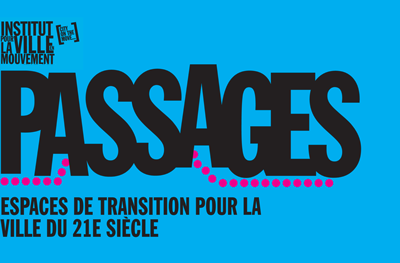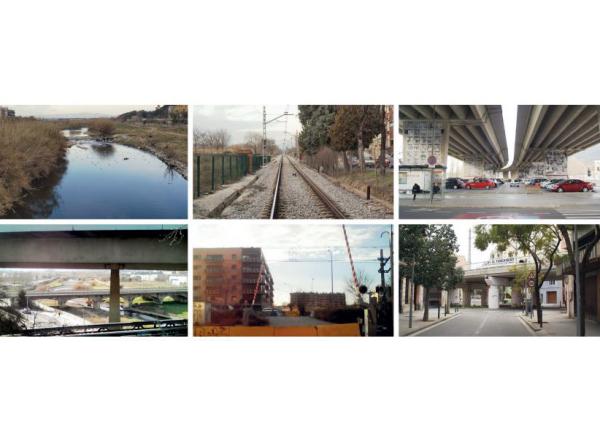Carles Llop
Introduction of the catalogue of results of the competitions in the Metropolitan area of Barcelona, published by AMB
Carles Llop, director of the Passages programme in Barcelona, architect, profesor at UPC-ETSAV
“Towards a well-reticulated metropolitan area
The metropolis of today’s Barcelona needs to be a network of goods and services, information and knowledge, interchange and interaction in a high-quality region. However, the basis of this network should not just be the physical space of the demarcation and the municipalities that make it up, but the fields of interaction and the milieu of economic-productive, creative competition, development and public quality-oflife relationships with the urban and territorial systems of the region, of Catalonia and of international networks.
This is what I call ‘urban reticularity’, the leading attribute of the multiple and multiplied city, which is experienced by its inhabitants on a spectrum ranging from their local neighborhood to different multiple socio-geographic realities.
The right to the metropolis is, like the right to the city, its inhabitants’ ability to use its services and enjoy the possibilities for development it offers. The fundamental right that best encapsulates all the possibilities of services, and of the metropolis itself, is the right to the street.
‘The street is ours. Everyone’s!’ was the great rallying cry and call to arms to civilise our cities and once again place pedestrians where they always should have been: at the epicentre of the urban spaces, as true protagonists of the public space.
However, when we use and live in the city, when we have to travel and move about it, we discover a great number of barriers and dead ends. Many of these obstacles are the result of blockages caused by large-scale infrastructures (railways, motorways and the like) or by more basic discontinuities in pavements. This reality, the legacy of self-built neighborhoods, suburbanization or a city built in fits and starts (and with a lack of inter-municipal coordination), has led to a great amount of fragmentation, discontinuity and sectorisation that means that the spaces for local inhabitants still remain—despite the great efforts made in reclaiming, re-urbanizing and improving public spaces—a great challenge for municipal programmes and policies. And it is one of the challenges that, in my view, has been taken on by AMB as a strategy for improving the efficiency of projects aiming to boost people’s quality of life in metropolitan territories.
So, if we observe and analyze the metropolis from the perspective of improving continuities, we realize that we have a great opportunity for the portfolio of metropolitan projects. The fact is that Metropolitan Passages represents the realization of a strategy for the regeneration of the metropolitan space by making ‘passages’. The aim is to re-establish lost continuities by remaking the itineraries of people, from the proximity of local neighborhoods to the structuring of municipalities and the great metropolitan routings.
The passage and multiplicity of types: passages as ‘passage events’ and places of exchange
The concept and content of ‘passing’ and hence ‘passage’ goes beyond structure and infrastructure and appears as a multifaceted ideal whose goal it is to guarantee the improvement of the spaces and enclaves of the contemporary city. The passage is neither structure nor infrastructure (although it is both); what makes passages are the things that happen there, what the senses make out and the perception of ‘what’s going on’, that which is experienced (which is carried out). It is in the action of ‘passing through’, be this individually (awareness of the act) or encountering or confronting other people or things (awareness of the ‘other’), that one comprehends spatiality (the quality arising from the fission of the physicality of the space and the different phenomena that are manifested there).
So, when we use the concept of the ‘passage’, which is both a real and a sensorial place, we integrate the space and the phenomenological conditions of sociability, the feeling of safety, comfort and information. Furthermore, all the activities carried on in passages offer a vast range of landscapes that enrich the diversity of our cities – think of the bridges (and the itineraries stemming from them) accessing the River Llobregat from Sant Boi. So, the passage is a kind of space and urban spatiality that practically solves the issue of the movement of persons and of traffic to create new urban places, the venues for meetings or confrontation, inclusion or exclusion, exchange or disassociation, exchange or integration, etc. In short: new archetypes of space in which movement and the relationship with their component parts establish a more richly-diverse social structuring of the city’s everyday life.
Passages, as situations and spaces that provide shortcuts to itineraries, facilitate the mesh of the network of roads and green paths, of access to transport systems and metropolitan facilities.
Passages in the design of the contemporary territory and the Barcelona Metropolitan Area
Against a backdrop of economic crisis and cuts in investment capacity, the cost of interventions in the urban and territorial space is a huge challenge when it comes to innovating and being able to efficiently manage a metropolitan area. Planning work on improving the mesh of public spaces to have an agenda for implementation is a completely new programme of public action. Although the so-called ‘urban acupuncture’ demonstrated the value of ad-hoc actions, today we need to go beyond that metaphor and propose small-scale, low-cost actions that can be used to continue structuring the metropolitan space as a whole; coordinated actions that range from the viewpoint of the specific site to the general structure of metropolitan networks.
Small-scale actions (based on opening up passages wherever there are barriers) form the basis of a refreshed regional project that must foster urban containment, the linking of urban fragments and the fitting of different types of cities into a new organizational system, both physical and functional, in line with a ‘city-territorial mosaic’ model. In using this new model for a city, all the parts must be connected (neighborhoods, facilities, installations, open spaces, etc.). In other words, we need to build a structure both morphological and environmental that fosters the ecological mutual adaption and the coevolution of interacting natural urban ecosystems. This new model of a city must be based on a connected mosaic of urban components and of the biophysical matrix of the environmentally balanced territory.
This can be achieved, first, by defining and constructing limits for the cities, creating well-defined boundaries between what is urban and what is rural, and boosting the values of proximity between peoples’ needs and urban devices facilitating services: work, recreation, health and culture.
What is more, we need to reuse: in other words, refurbish and recycle obsolete or underused fabrics. Connecting all these holistic actions, the passages and their different resources constitutes an exemplary device for a refreshed strategy for the action programme on the metropolis open spaces, as we can see in the set of territorial sites proposed for the Metropolitan Passages competition and in the Besòs Passage, presented in this book.
Some examples show us the great transformative capacity of opening up passing points and making passages. In the case of the La Mina district of Barcelona, the building of a rambla/promenade-based neighborhood has allowed this district, stigmatized and excluded from the city’s dynamics, to open up to urban continuity. In the 1970s, the area was a complex of residential buildings for the disadvantaged, excluded from (amongst other things) the right to mobility. The goal was to conserve the area and its cultural richness, whilst offering people a connection between their neighborhood and the rest of the city. The Rambla is a place for strolling in connection with the tram that travels along the same thoroughfare. So it is that life and the city are organized through and around the Rambla, with new housing, shops, services, etc. This is how one can manage to reconfigure public spaces.
With similar criteria and highly successful social effects, the Parc de la Solidaritat in Esplugues de Llobregat overcomes the barrier formed by the existing ring road, creating two large flows that connect two historically separated neighborhoods and establish a new multifunctional space for lingering and enjoying.
From the standpoint of more stabilized urban spaces, in the case of the center of Cornellà de Llobregat, sequential planning over time and the concatenation of partial projects has ensured the establishment of a large civic space that expands its condition, brings and sutures together neighborhoods and introduces the tramway to link it with the great metropolitan city. A project that keeps a close eye on improving local-scale passing points and that boasts a clear structural vision of the municipality.
All three examples show us how we can, at different scales, implement refreshed social and environmental urban planning, which needs to conserve sine die spaces of extreme environmental quality and foster the superimposing of mixed uses and spaces, which should link the peripheries and which must, above all, make people the protagonists of public spaces and therefore facilitate their movement, the passage and, obviously, their staying there.
Creating passages as part of a suturing design logic means properly planning and administering urban transition areas, managing the rich biodiversity of the high-quality sites that form part of existing mosaics in regional-scale territorial urban spaces and reclaiming the quality of margins in metropolitan perimeters and interstices.
The passages designed in the competition organised by the Barcelona Metropolitan Area show how the landscape can be a social mediation tool for managing transformations, as they suggest territorial transformations that open up new appropriations of spaces on the part of the public.
The project of passages in metropolitan landscapes is, then, a tool, a form of cultural mediation that facilitates a critical vision of the need to transform the region’s barriers.
Reclaiming the neglected territories of metropolitan peripheries means creating a factory of landscapes that permits, in addition to new forms and spaces, the appearance of new ethical attitudes on the part of those living there. We all want quality of life, and passages facilitate ease of access and mobility, not to mention social exchanges.
Passages are, like the landscape we live in, a key factor in guaranteeing the quality of our metropolitan area.”

